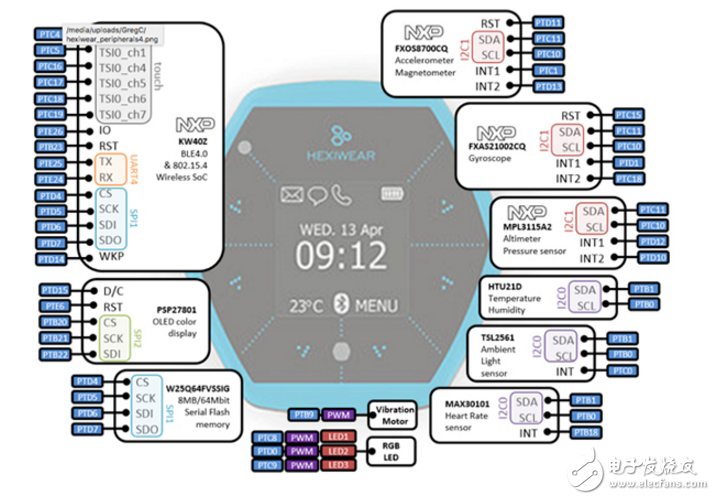
资料下载

可穿戴平台简化物联网设备样机
可穿戴平台简化物联网设备样机
从历史上看,可穿戴式设计很难被原型化。核心问题是规模问题。最现成的开发板和系统是专为台式环境,体积和重量都不重要。
更大的电路板尺寸使得制造商很容易使用相对简单的PCB生产线提供低成本的开发支持。相对较大的板房地产也支持传统的扩展头连接器。大针的大小和间距对这些头连接器可以很容易地使用一次性的面包板和非常低的成本生产原型服务定制I/O扩展。
虽然可以使用台式型发展的系统,可以执行一个可穿戴功能的高功能的系统,它不能对一个系统,试用者和早期采用者可以使用像是一个真正的产品需要。当涉及到可用性和其他重要的戏剧测试和实验时,一个不舒适和笨重的健身可穿戴将功亏一篑。所需要的是一个提供大多数传统开发板的灵活性的平台,但对于可穿戴设备设计来说,这是一个有意义的因素。

Platforms such as MikroElektronika’s Hexiwear provide a way of building applications and testing them in a realistic user environment. At its core, the Hexiwear platform provides an integrated MCU and peripheral solution in wearable form supported by an open-source development environment. More importantly, it is packaged in the form factor of a compact hexagonal module that can easily be attached to a wristband for use as an IoT-enabled smartwatch. Alternatively, it can be fitted into a pendant ring for use as a brooch or for integration into items of clothing.
The form factor also suits uses in the wider smart home environment where it can be deployed as a removable element in a wall-mounted module or larger mechanical system. Smart home focused projects that have been based on Hexiwear include a smart bathroom scale that transmits the measured weight to the user’s smartphone, a doorbell with the ability to report activity to homeowners remotely and display custom messages to visitors, and a smart refrigerator magnet able to report the internal temperature to users on the Hexiwear’s display.
The Hexiwear platform is based on a Kinetis K64F MCU featuring an ARM® Cortex®-M4 core running at up to 120 MHz, supported by numerous peripherals including ADCs, a DAC, timers, and serial interfaces (Figure 1).
声明:本文内容及配图由入驻作者撰写或者入驻合作网站授权转载。文章观点仅代表作者本人,不代表电子发烧友网立场。文章及其配图仅供工程师学习之用,如有内容侵权或者其他违规问题,请联系本站处理。 举报投诉
- 相关下载
- 相关文章






